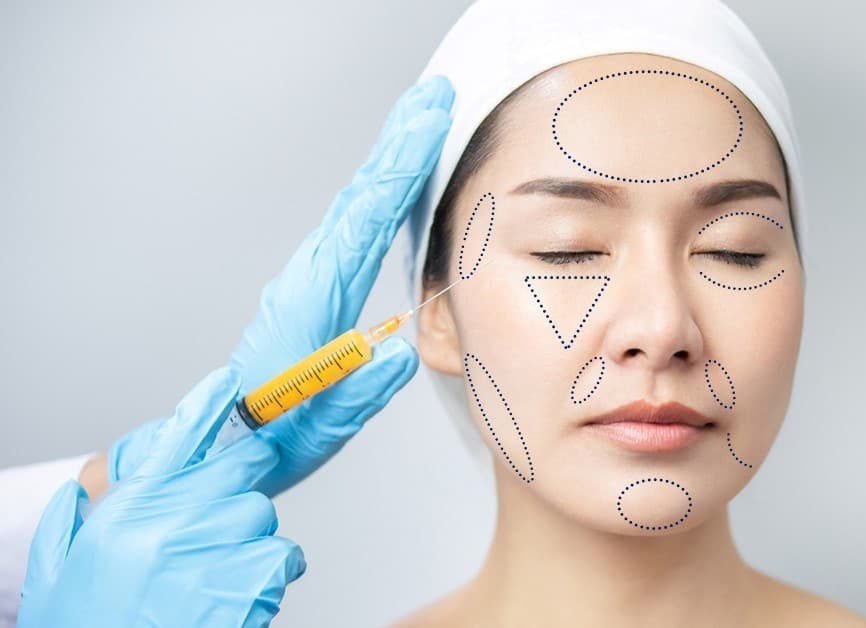Fat grafting


Fat grafting, also known as fat transfer or fat transplantation, is a cosmetic surgical procedure that involves removing fat from one area of the body and transferring it to another area to enhance volume or reshape specific features. This procedure is commonly used in both aesthetic and reconstructive surgery. Here’s an overview of how fat grafting works:
Harvesting the Fat:
The process begins by identifying a donor site where excess fat can be safely removed. Common donor areas include the abdomen, thighs, buttocks, or flanks. The surgeon typically performs liposuction to extract the fat cells. This involves making small incisions, injecting a solution to loosen the fat, and then using a cannula (a thin tube) to suction out the fat.
Processing the Fat:
After extraction, the harvested fat is processed to remove impurities, oils, and other substances. This step helps prepare the fat for injection.




Injection:
The purified fat is then carefully injected into the target area, often using small syringes or cannulas. The surgeon strategically places the fat cells to achieve the desired result. Common areas for fat grafting include the face (for facial rejuvenation), breasts (for augmentation or reconstruction), buttocks (for a Brazilian Butt Lift), and hands (to add volume and reduce the appearance of aging).
Sculpting and Shaping:
The surgeon sculpts and shapes the transferred fat to ensure a natural-looking and symmetrical outcome. Multiple injections may be necessary to achieve the desired result.
Recovery:
Recovery time varies depending on the extent of the procedure and the areas treated. Patients may experience swelling, bruising, and discomfort, which typically subside within a few weeks. It’s important to follow post-operative instructions to minimize complications and ensure a successful outcome.




Please note that medical procedures and techniques may evolve over time, and it’s essential to consult with a healthcare professional for the most up-to-date information and recommendations regarding fat grafting.
Fat grafting has several advantages:
- It uses the patient’s own tissue, reducing the risk of allergic reactions or rejection.
- It can provide natural-looking results.
- It can be used for both cosmetic and reconstructive purposes.
However, it’s important to consult with a qualified and experienced plastic surgeon to determine if fat grafting is appropriate for your specific goals and needs. Like any surgical procedure, fat grafting has potential risks and complications, including infection, asymmetry, and fat absorption. The longevity of the results can also vary from person to person.
Uses of fat grafting procedure
Fat grafting, also known as fat transfer or fat transplantation, has a wide range of uses in both cosmetic and reconstructive surgery. Here are some common applications of the fat grafting procedure:
Fat grafting offers several advantages in reconstructive surgery, as it uses the patient’s own tissue, minimizing the risk of rejection and allergic reactions. However, the success of the procedure depends on various factors, including the patient’s overall health, the skill of the surgeon, and the specific goals of the surgery.
It’s important to consult with a qualified and experienced plastic surgeon to determine if fat grafting is an appropriate option for your specific needs and to discuss the potential risks and benefits associated with the procedure.
Cosmetic Uses:
-
Facial Rejuvenation:
Fat grafting can be used to restore volume to the face, reduce the appearance of wrinkles and fine lines, and improve facial contours. It is often used to achieve a more youthful and refreshed appearance.
-
Lip Augmentation:
Fat can be injected into the lips to increase their volume and enhance their shape. This is a popular procedure for individuals looking to achieve fuller, more attractive lips.
-
Breast Augmentation:
Some individuals opt for fat grafting as an alternative to traditional breast implants. It can be used to increase breast size and improve breast shape.
-
Buttock Augmentation:
Fat grafting is commonly used to enhance the size and shape of the buttocks. This procedure can create a fuller and more sculpted buttock appearance.
-
Hand Rejuvenation:
As hands age, they may lose volume, leading to the appearance of prominent veins and bony structures. Fat grafting can be used to restore volume and create a more youthful appearance in the hands.
-
Scar Revision:
Fat grafting can be employed to improve the appearance of scars, including those resulting from surgery, trauma, or burns. The injected fat can help smooth out irregularities and add volume to the scarred area.
RECONSTRUCTIVE USES:
Breast Reconstruction:
Fat grafting is often used in breast reconstruction surgery following a mastectomy. It can help create a more natural-looking breast contour and improve symmetry.
Facial Reconstruction:
Fat grafting can be used in facial reconstructive surgery after trauma, cancer surgery, or congenital deformities. It can help restore lost tissue and create a more natural facial appearance.
Breast Conservation Surgery:
In some cases of breast cancer, a lumpectomy (removal of a portion of the breast) is performed instead of a full mastectomy. Fat grafting can be used to fill in defects left by the surgery and achieve better cosmetic outcomes.
Soft Tissue Defects:
Fat grafting can be used to address soft tissue defects and contour irregularities resulting from various medical conditions or injuries.
Cosmetic Complications Correction:
It can also be used to correct complications from previous cosmetic procedures, such as breast implant issues or liposuction irregularities
